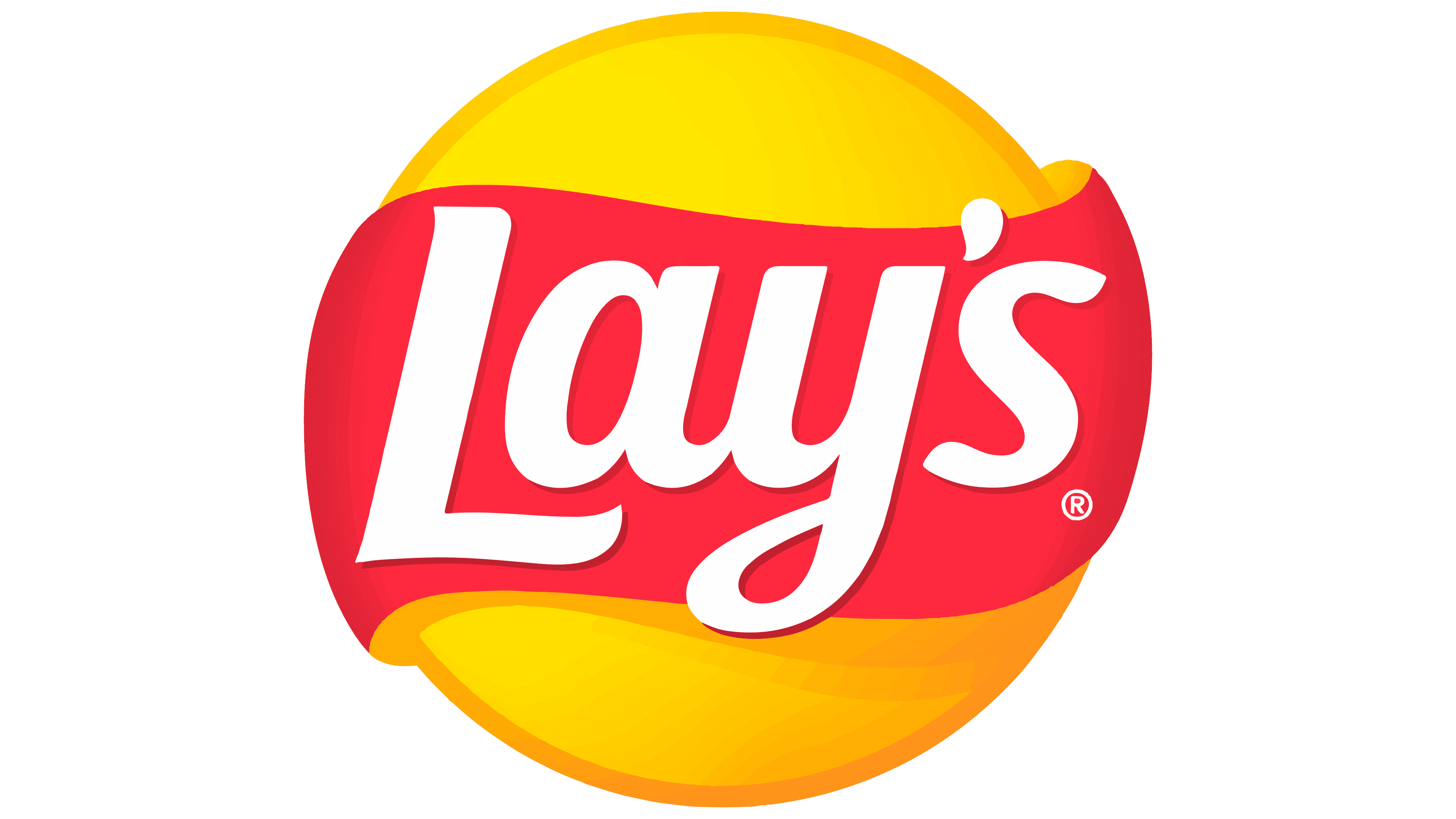Yo linux team, i would love some advice.
I’m pretty mad at windows, 11 keeps getting worse and worse and I pretty done with Bill’s fetishes about bing and ai. Who knows where’s cortana right now…
Anyway, I heard about this new company called Linux and I’m open to try new stuff. I’m a simple guy and just need some basic stuff:
- graphic stuff: affinity, canva, corel, gimp etc… (no adobe anymore, please don’t ask.)
- 3d modelling and render: blender, rhino, cinema, keyshot
- video editing: davinci
- some little coding in Dart/flutter (i use VS code, I don’t know if this is good or bad)
- a working file explorer (can’t believe i have to say this)
- NO FUCKIN ADS
- NO MF STUPID ASS DISGUSTING ADVERTISING
The tricky part is the laptop, a zenbook duo pro (i9-10/rtx2060), with double touch screens.
I tried ubuntu several years ago but since it wasn’t ready for my use i never went into different distros and their differences. Now unfortunately, ready or not, I need to switch.
Edit: the linux-company thing is just for triggering people, sorry I didn’t know it was this effective.
Visual Studio is not available on Linux and not really working in Wine, sadly. You can use IntelliJ IDEA as a good alternative, it supports Linux officially and has a Flutter plugin.
For a beginner, Linux Mint is perfect. It is based on Ubuntu which is based on Debian, so you can follow most tutorials written for either distribution (like the installation instructions for IntelliJ IDEA or other software that is not available from the APT package manager).
deleted by creator
The post was edited
Sorry, I honestly didn’t know it was that different Visual studio from visual studio code. I use the VS CODE and it seems available on linux, but I’ll check also Intellij IDEA.
Visual Studio is meant for C/C++/C#, IntelliJ is made for Java (as the name might suggest). JetBrains has IDEs for C (CLion) and C# (Rider) though. All JetBrains IDEs are available for Linux. Visual Studio isn’t, Visual Studio Code is. I recommend using an optimized version of Visual Studio Code called VSCodium.
For a beginner, Linux Mint is perfect
Mint for Mint then maybe the Debian Edition (LMDE) instead the the common one based on Ubuntu, which again is Debian just LTS.
Also, if OP is tired of Microsoft enshittification imagine him finding out Ubuntu’s company Canonical decided that apt command should sometimes install snap packages instead of deb binaries, because “reasons”(NVM lucky us at Mint there are sane people). Or that it tried to put ads in their OS even before Windows even tried.I have a native Linux version of Visual Studio Code on my Tumbleweed system and everything works fine so far for me
VS, not VS Code
Why anyone outside the Microsoft ecosystem would want to use Visual Studio though, idk
I know, I feel very bad for this, but I needed Github Copilot, because I’m too stupid to code on my own
I think you’re mixing up Visual Studio and Visual Studio Code. Visual Studio is a massively bloated IDE mostly used for .NET development, but supports other things too. It’s proprietary, massive, slow and a pain to work with, and doesn’t run on Linux afaik
Visual Studio Code, on the other hand, is an Electron app and therefore runs almost everywhere, and is (partly or totally, I’m not sure) open source. Nothing wrong with coding in VS Code, it’s a decent IDE
Tbf I think OP is also mixing up VS and VSCode because the dart/flutter recommended setup is all based on VSCode and VSCode extensions.
Telemetry, licensing and proprietary extensions in VS Code is the whole reason for VScodium to exist.
https://github.com/VSCodium/vscodiumVisual Studio Code […] is (partly or totally, I’m not sure) open source.
Visual Studio Code is like Android is relative to the Android Open Source project. As far as I know, VS Code comes with an additional Microsoft layer of telemetry and closed source additions in its binary form. Not to mention the license which basically assumes the right to do almost anything to the underlying system. That’s why projects like VSCodium came into existence.
Please anyone, correct me if I’m wrong.
Ah, thanks for the clarification -
I don’t use VSCode(ium) myself, I’m usually quite content with Helix + LSPs, and if ever need a full IDE I usually go with the Jetbrain products
Visual Studio and Visual Studio Code is not the same thing at all 😂
And Microsoft really sucks at naming things. Windows 10 wasn’t the 10th Windows version, the Xbox One wasn’t the first Xbox, there are many more examples.
Linux is not a company lol I hope that was a joke. Also Linux is not new.
Now to the software: it will likely run everywhere. Davinci resolve is a bit picky but also fine.
You have quite some Windows-only software. Check https://alternative-to.net or try running it through WINE with Bottles
To the Distro: this is complex. Many people will recommend Linux Mint and it is easy to use but very restricted. I dont think it is great really.
There are many many parallel efforts, so on Linux Distributions (Linux + packages + desktop + …) you can get very different software.
For a painfree experience running Windows software and Davinci Resolve I recommend to try Bazzite
It is very different from others:
- it updates automatically in the background. But completely different from Windows. Updates always work and are efficient and stable. No 10 times rebooting
- updates finish and you can reboot any time to apply it. Literally a week later, nobody cares
- the reboot takes just as long as any other reboot, no downtime
The system is way better and more stable than “traditional” ones. This is quite complex but lets say while on Linux Mint, Ubuntu, Fedora etc. you will have an indivudual system, with individual packages and in the end some strange errors only happening on your setup, with Bazzite you will have exactly 1:1 the system that the developers create.
It is based on Fedora Atomic Desktops which are pretty great. But for your use case I dont recommend them.
I recommend the Bazzite Desktop version with the KDE Plasma desktop. This will be Windows-like in a very good way, but incredibly more efficient, faster and also more powerful. Like a Filemanager with tabs and extensions, that is not written in whatever bloat Microsoft uses (their Win11 stuff is so slow…).
To sum it up, on Linux you have to decide:
What Desktop environment?
- I recommend KDE Plasma a lot
- GNOME is also good but veery opinionated and minimalist
- I dont recommend others like Linux Mint’s Cinnamon yet, as they dont support modern standards (Wayland)
What Distribution family?
- Debian, Fedora, Arch, OpenSUSE
- they are all a bit different but basically doing the same
- Ubuntu stems from Debian and became popular as “the beginner Linux” but they do very controversial stuff nobody else does (like the Snap store) and have tons of bugs. I used it a lot with bad experiences and dont recommend.
- Linux Mint and others also use Ubuntu or Debian under the hood
- Arch is very manual and difficult for new users, dont use it
- OpenSUSE does whatever they do, not recommended
- Fedora is pretty modern in their software, has a nice community and a big variety of options. They are not allowed to ship restricted media codecs for stuff like h264 video though
- uBlue (Bazzite, Bluefin, Aurora) is a project using Fedoras versions and adding nice stuff to it, making them usable out of the box. This is their goal, and they do it really well.
Wow, thank you for all the info in details! I need to start testing some of distros I guess and see how it goes (sounds fun too). UBlue project looks very very interesting.
Ublue also has Asus-specific variants which I assume probably has some compatibility fixes added in that would have to be installed manually in most other distros.
Since you use VS Code I’d strongly recommend the developer variants of ublue, which are only available for Aurora and Bluefin, as it gives you a preinstalled VS Code which will be a better experience than trying to install it after the fact. (if you go to the download page for them, answer “yes” to “are you a developer?”)
For minimum learning curve, use Aurora over Bluefin as the UI is more familiar. Also, make sure you pick the Nvidia option for the GPU question.
True, but Aurora/Bluefin dont have WINE preinstalled.
I wouldnt run WINE stuff on the system, but that is likely less complicated, as using Bottles means you cannot really use a Windows program to edit stuff on your system by default.
The good thing is that most distributions have live images that you can basically put on a USB stick and run without installing anything. It won’t give you quite the same experience as an installed instance but will at least let you play around with things (especially Gnome or KDE etc.)
I started using Linux 2 years ago or something. Linux Mint, Kubuntu, MX Linux (wtf Distrowatch), Manjaro, KDE Neon, Fedora KDE…
broke all. On Fedora Kinoite since then, switched to uBlue Kinoite, no complaints.
Currently using secureblue but many things I disagree with, planning a fork.
I would stay away from Fedora based anything if you want stability. Linux Mint is is as flexible as you make it.
Fedora has 2 versions supported, the current release and the old release. It is pretty modern in packages, but this is normally not a problem at all.
I never used the old release but that would give more stability. On the atomic variants this means though that you dont get automatic updates, as using
latestwill auto update when upstream sets the new version as latest.
I’m going to toss in another recommendation for Linux Mint. The interface is very similar to classic Windows and it has a large user base so it shouldn’t be hard to find instructions online if you get stuck. Software-wise, Linux Mint 21.3 is entirely compatible with Ubuntu 22.04 LTS. Use the default Cinnamon version.
Coming from Windows, the only other very important non-obvious thing is that you should look for software on the app store application first instead of downloading packages from the Internet. Unlike the Microsoft Store, Linux app stores are often connected to a variety of software sources, and they will also update your software to the latest versions automatically whenever you download system updates. Almost all of the software you mentioned can be found in the app store. It’s very convenient!
Isn’t Google dismantling the flutter team?
Doesn’t mean your company didn’t bet on the wrong horse. Luckily we stay far away from anything Google touches, but I have friends in other companies who weren’t as lucky.
So far we’ve been lucky. But, we are concerned with some of our stack. We help where we can, but it’s a bit of an unknown. The google graveyard basically screams to keep away from any of their tech.
I’m still recovering from the news.
It was supposed to be the react-native killer!
Edit: the linux-company thing is just for triggering people, sorry I didn’t know it was this effective.
So you’re a dick. Got it.
ad hominem much
Anyone that uses the word triggering like that is kinda a dick ¯\_(ツ)_/¯
Doesn’t matter, we should attack the argument not the person.
He literally admitted to posting to trigger people. I’m stating fact that by doing so he’s being a dick. The motives of the person matters and he came in here with the purpose of pissing people off.
Clearly it worked for some.
Clearly it worked for some.
I think it clearly worked for you.
Looks to me like a little joke buried in a sincere post. You can make more out of it if you want, but I think you’re being a little bit curmudgeony.
I couldn’t care less about the original post, but I will also call people out in the hopes that they stop being a dick to others. Anyone who enjoys seeing people get agitated needs to have their head examined.
Please, let’s be clear and don’t get confused: I am in fact a huge dick.
Thank you kind man for pointing it out, i felt like someone here didn’t get my dickness fully.
deleted by creator
Nobara has a lot of fixes in it that are made for video editing and graphics, particularly davinci and blender. It’s quite cutting edge on it’s packages (despite being based on Fedora 39 it has Plasma 6 for last few weeks). but otherwise quite stable to use. All non-free package repos are enabled. Overall, it’s been a low-maintenance, high productivity environment for me.
Gimp and Blender are Linux software
DaVinci Resolve has a Linux version
Code OSS (or VSCode is you want Windows telemetry included) works
a working file explorer
Not an issue, you can use Dolphin on Windows if you wanted
NO FUCKIN ADS
That’s easy
Now unfortunately, ready or not, I need to switch.
Try Mint
The things I missed are ones I know nothing about
In all honesty, you should decide between Debian and Fedora. If you’re new to this, stay away from Arch Linux, Gentoo, or Manjaro. Simplicity is key. The two systems I mentioned are known for their reliability, so you should be fine with either one.
- Affinity Designer can be run under Linux with Bottles translation (forum post how to set it up)
- Canva does not support Linux
- GIMP is natively supported on Linux (official website / flatpak)
- Adobe is not supported on Linux at all
- Blender is natively supported on Linux (official website / flatpak)
- DaVinci Resolve is natively supported on Linux (offical website)
- VSCode is natively supported on Linux (official website / flatpak)
- almost every DE has a file explorer
- no ads included 😀 👍
If you are made out of matter stay away from manjaro. Other than that I agree, and would recommend debian slightly over fedora but that is just personal preference. Also I feel like opensuse deserves an honorable mention. Maybe not tumbleweed, but leap could be suitable for a new user and yast rocks.
Edit: Also vscodium can be good alternative to vscode. It is vscode without Microsoft’s tracking, but an exact copy otherwise.
Indeed, I use VSCodium on my Fedora system every day, but since the question was about VSCode, I provided information specifically related to VSCode.
Debian rigorously tests its packages over an extended period before they are released in the official version, ensuring a very stable system. This approach means the software is generally older, but it’s been thoroughly vetted. Fedora, on the other hand, provides newer software while still maintaining a good level of stability.
On the other hand, Arch Linux — and its sub-distributions like Manjaro and Gentoo — releases software much more quickly, sometimes almost immediately which can kill your system during updates.
I’d go so far as to say that Arch Linux is less stable than Windows.TL;DR: If you don’t want to find out five minutes before an online meeting that your system won’t boot — avoid Arch Linux.
deleted by creator
I use Canva in the browser, but I gotta say that it works better in Microsoft Edge than in Firefox. I think it may be a Chromium thing, but I haven’t tested other browsers.
Microsoft Edge works great on Linux. It is my second browser after Firefox.
Imagine switching to Linux and installing Microsoft Edge 💀
Linux Mint if you’re unsure
Fedora if you’re brave and want the full Toolbox
Please not Ubuntu. It has enough of its own issues that it originally turned me away from Linux.
Oh and KDE for the desktop environment if you want great out of box windows like UI if you go with Fedora. Mint comes with cinnamon which is also pretty good. xfce if you want to run linux on a potato.
I heard about this new company called Linux
I thought it was funny at least, so you gave me a good laugh.
I’d say Linux Mint or Ubuntu (you’re familiar with this one) would be good “Out of the Box” options. They run an environment known as “Debian” so they’re super similar and are pretty similar to what Windows offers in all honesty. You just burn them to a USB, run them from your desired computer’s BIOS, and the rest is through a GUI interface you can follow along with. I have no experience with a touchscreen as I’m running Linux Mint XFCE (lightest weight version) on a laptop from the early 2010’s with an Intel N2820 in it, but I’m assuming some workaround can exist to implement that. You also seem somewhat familiar with the alternative programs for different purposes, but rest assured both Ubuntu and Mint come with file explorers (Mint XFCE uses one called Thunar which is pretty effective) and you can easily swap out/install a different file manager to get jobs done as needed.
Plus - any programs you used with Windows which may not have Linux alternatives or versions - can be run through Wine. I’ve encountered a few hiccups when doing this (like a program I needed for school which was unable to pass the initial installation and actually run the program).
I’ve run Linux Mint XFCE as my daily driver for work and school tasks on my laptop for about 2-3 years at this point and it’s been pretty great. Full disclosure: I still run Windows 11 on my main PC at home and have Windows 10 on a HTPC/Server with docker on it (though I’ve been debating switching to Ubuntu for this as well) so I still know there are benefits to a Windows system (while working to remove any and all advertising and AI garbage) but if I were to recommend someone a distro it would be as I’ve said above.
Good luck! Hope you find one that works for you!
Thanks, I feel like Mint could be already a valid one but maybe Fedora kde could be more useful. I’ll check both for sure asap. It’s crazy how bad windows is honesty and still so necessary for some jobs.
Can Mint read files from a Windows partition or is it a different filesystem?
I’m waiting until there’s a good sale on Hard drives to set up a dual-boot.
Reading filesystem is not about which distribution you have but drivers on disc. If you have FAT the defaults should work, for NTFS you might have to install the ntfs driver. I don’t use mint but it’s the linux way so either it’s already there or you can install it. Once you have driver just mount it like a normal drive and it’s done.
Good to know. Thank you.
I would say to just try it out and see how it is! The live USB works nicely and you can decide you don’t like a distro and move on rapidly. There are also tools out there that let you load up multiple distros on the USB at once, and then pick which one to use when you boot up.
I went through my own struggles with dual booting Linux some time ago. If you search on Lemmy, you can find those embarrassing posts. It was my fault, I got confident and messed with ‘grub’ in all the wrong ways, before cutting my losses early and reverting everything because I had other commitments to deal with.
The good thing though is that it’s totally possible to put Windows back 100% the way it was before, even after messing up as badly as I did (I couldn’t boot into either operating system because the machine couldn’t find the boot entry). Once you’re ready to replace windows with Linux (or dual boot etc.), make a good backup with something like Macrium Reflect and you should be safe to go for it. I highly doubt you’ll make the mistakes I did, the story is to say that you can mess up and be just fine!
As for your use case:
- affinity programs aren’t on Linux from what I remember, you might want to experiment and see if you can run it with Wine or if you have an alternative (ex. Dual boot, different programs)
- Not sure about Davinci, comments suggest that it runs ok on Linux. I like KdenLive
As for what people recommended, and what I’m planning to try soon
- Kubuntu (if you want Ubuntu that looks similar to windows)
- Fedora (what I tried last time)
- Linux Mint
video editing: davinci
Btw, there’s olive editor 0.2. It’s kinda unstable, but much better interface than davinci. Plus, it’s open source.
I don’t think Olive is a good alternative to davinci resolve. First, nothing is good if it crashes a lot. Second, Davinci Resolve is feature rich and super powerful, while Olive is not. The closest FOSS alternative is Kdenlive, but I’d recommend finding a distro that can run Davinci itself, as Davinci does have a native Linux client for some distros.
Well, can’t argue much with that. It’s a shame it crashes often… I might check kdenlive some time though.
KDE Neon is a fantastic choice for those coming from Windows. https://neon.kde.org/
Sadly, still dual boot for rhino, in a VM I’m just not getting enough performance out of my aging pc.
A Linux version would be a dream come true.





















